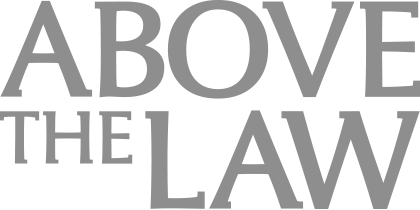Why Data Visualization Is Becoming An Important Legal Trend
As more data gets accumulated, the legal community needs to look at more creative ways to sort and organize it so that it can actually be used, as legal technology columnist Jeff Bennion explains.
I remember when I was a sophomore in high school and my friend told me that he just upgraded his computer to 32 mb of ram and I was totally blown away at how much ram that was. Now, 16 gb flash drives are sold in the “impulse buy” section in between batteries and candy bars.
The amount of data that we create, store, and distribute is growing at a crazy rate. Anyone who has done document review for more than an hour knows the effect this has on litigation – the contract drafts, the calendar requests, the group e-mails, the reply alls to the group e-mails, the interoffice memos, etc. Every time someone hits Reply All to a large group e-mail to say “Thanks!” or “Ok! Got it!”, some doc reviewer gets 15 more minutes of billable time. It all adds up and creates a bunch of data that needs to be reviewed.
For most people on the doc review team, the focus is just sorting and organizing – putting everything into little piles until the case settles or the next project comes along or the documents run out. But for the people who actually need to use the data, sometimes having 50,000 documents tagged “knowledge of danger” is of little use because it still leaves you with a big pile to sort through. So, as more data gets accumulated, the legal community needs to look at more creative ways to sort and organize it so that it can actually be used.

How Thomson Reuters Supercharged CoCounsel With Gen AI Advances

That’s where data visualization comes in. Data visualization is kind of a nerdy term for the awesome concept of adding art, creativity, and math together to visually digest huge chunks of data.
By way of example, 18 minutes ago, I opened up some websites about data visualization to get some information about the enormousness of data in the internet and how to best visualize it. I came across this site. Not only do I get a live counter telling me that there were approximately 10,000,000 tweets made since I opened that page 18 minutes ago, but I get a graphic representation of what that data actually looks like. Same for number of YouTube clips watched, amount of data transferred over the internet in one second, etc. By reducing data to graphics, it makes it easier for us to understand it.
A few weeks ago, I wrote about how we can use the built-in tools in Excel to help do this. Here are some other tools to use in litigation.
Sponsored

Legal Contract Review in Under 10 Minutes? Here’s How

Tackling Deposition Anxiety: How AI Is Changing The Way Lawyers Do Depositions

How Thomson Reuters Supercharged CoCounsel With Gen AI Advances


Data Privacy And Security With Gen AI Models
Data Visualization in E-Discovery
Think back to any cop movie. Almost all of them have cork boards with photos of bad guys with strings of yarn connecting them together with a couple of pieces of evidence on the board too. If they have a couple of cork boards, there’s probably room for maybe 50 or 60 pieces of paper/photographs linked together, which is maybe about 6 mb of scanned data.
Now, what do you do when you have 2.5 terabytes of data and you need to see what the connection is between the players and the evidence? You could print out a coding spreadsheet with all of your tags and comments, or you could visualize it. A lot of doc review platforms are implementing data visualization. Here is a video from Recommind on their platform:
If you have e-mail threads with missing e-mails, you can either start printing them out and laying them out on the floor to find where your missing e-mails are:
Sponsored

Curbing Client And Talent Loss With Productivity Tech

Data Privacy And Security With Gen AI Models
Or you can one-click visualize it:
Samples of Other Data Visualized
If you have mass amounts of data and you need it organized and you have no clue how you can go about doing it, it helps to start out with some samples. Here is a list of some large data sets that the U.S. government has put to visualization from census data. One you get a grasp on what kind of end product you want, take a look at some tools for visualizing data here.
Now, there have been 11 billion e-mails sent from the time I started this article until now. There have been about 200 billion tweets since Fortune magazine called Data Visualization the next big thing in big data.
Shameless plug time: Next week, the California Bar will be holding its annual Solo and Small Firm Summit. I will be speaking there on Friday about cost-effective software tools that solos and small firms can use to prepare for trial. All attendees get a free name badge with your paid registration and access to lots of CLEs. It was sold out last year, so get your tickets.
Jeff Bennion is Of Counsel at Estey & Bomberger LLP, a plaintiffs’ law firm specializing in mass torts and catastrophic injuries. Although he serves on the Executive Committee for the State Bar of California’s Law Practice Management and Technology section, the thoughts and opinions in this column are his own and are not made on behalf of the State Bar of California. Follow him on Twitter here or on Facebook here, or contact him by e-mail at [email protected].







